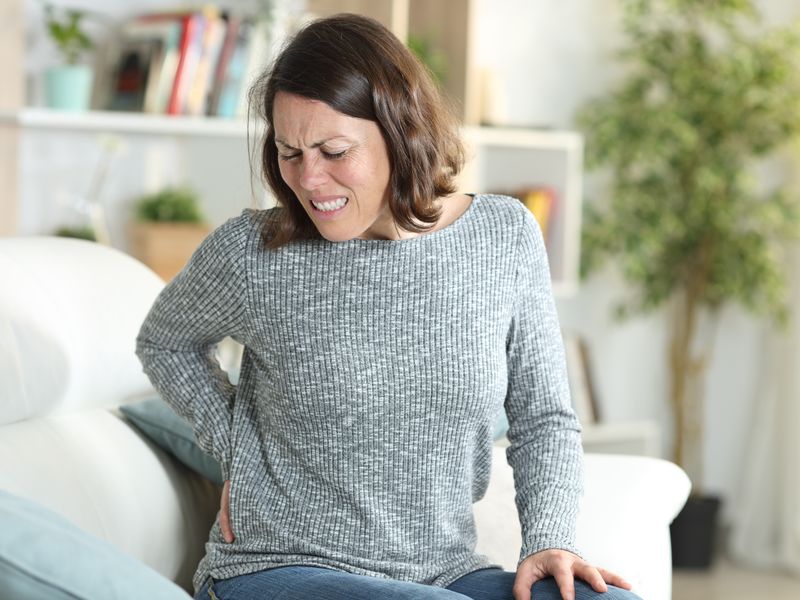Osteoporosis: why women are more at risk

[ad_1]
“Bone problems tend to affect women more than men, mainly due to hormonal fluctuations experienced throughout life,” says Dr Ranjith Narayan, orthopedic specialist at Aster Hospital, Mankhool. “Women’s susceptibility to bone problems can be attributed to factors such as hormonal changes during menopause, lower peak bone mass compared to men, and longer life expectancy.”
Dr Mujeeb Muhammad Shaik, assistant clinical professor and consultant in orthopedic surgery at Thumbay University Hospital, says in the past the situation was even worse for women because social expectations prevented them from participating in weight-bearing exercises, which are crucial for bone health. “In addition, a number of elements, such as poor diet, calcium loss during pregnancy and breastfeeding, certain medical conditions and medications, can together contribute to a higher incidence of bone problems in women,” says Dr. Shaik. “While these characteristics make women more likely to experience bone problems, it is crucial that both sexes focus on good nutrition, exercise, and preventative healthcare measures to maintain optimal bone health throughout their lives.”
Bones are made up of a matrix of proteins and minerals, which makes them strong and flexible. They contain osteocytes, which are special cells that maintain this matrix. The hormone estrogen regulates bone metabolism. It is essential for bone health because it promotes the activity of osteoblasts, which are the cells that produce new bone.
“Estrogen plays a vital role in regulating bone turnover and its decrease accelerates bone loss. This hormonal imbalance weakens the bones, making them more prone to fractures,” explains Dr Arun Krishnan, Orthopedic Specialist at Aster Hospital, Al Qusais.

Image credit: supplied
Difficult diagnosis
The process of diagnosing osteoporosis differs depending on the age of the woman. Diagnosing osteoporosis in women can be difficult, especially if they have not gone through menopause. Typically, if a woman is under 50 years old, a DEXA scan will not be done right away unless a preliminary exam and labs indicate that the risk of osteoporosis is high.
During the diagnostic process, a doctor will perform a physical examination and medical history, which will help determine if your risk of developing osteoporosis is high. If your symptoms and physical exams warrant further testing, they will be done. Other tests will also be done that measure levels of nutrients or hormones in the blood or look for abnormalities that could indicate a chronic disease.
“Performing a bone density test commonly known as a DEXA scan depends on a number of unique characteristics,” says Dr. Shaik. “In general, women without certain risk factors are advised to think about monitoring their bone density around age 65. For those at higher risk, such as those who go through early menopause, have a family history of osteoporosis, use certain medications that affect bone health, or suffer from diseases such as rheumatoid arthritis or low body weight, earlier testing may be recommended.”
Additionally, women who have experienced fragility fractures or engage in behaviors such as smoking or excessive drinking may need to be evaluated sooner. “The best way to decide the right time to perform a bone density test is to consult a health professional, as they can provide specific advice based on the particular health profile associated with each woman, which will allow you to act quickly as necessary. necessary,” advises Dr. Shaik.
Possible prevention
Prevention of osteoporosis in women should begin as early as possible. Young women and adolescents can implement certain lifestyle changes that can help them reduce their risk of developing osteoporosis and protect their bone health.
Taking charge of bone health requires a multifaceted approach; As Dr. Krishnan points out, adopting a healthy lifestyle is essential. “A balanced diet rich in calcium and vitamin D nourishes bones, while weight-bearing exercises, such as walking and weight lifting, strengthen bones and muscles,” he adds. “Refraining from smoking and limiting alcohol consumption supports overall bone health,” he adds.
Experts also recommend consuming health supplements that are made up of bone-strengthening nutrients, such as calcium, magnesium, and boron, from a seaweed called Lithothamnium Calcareum. Adequate intake of calcium and vitamin D is important for maintaining strong bones. While calcium is an important component of bone tissue, vitamin D helps the body absorb calcium from food. Women should aim to consume at least 1000-1300 mg of calcium and 400-800 IU of vitamin D per day. It can be included in the form of supplements in your diet plan.
Medication and treatment
Medications and hormone therapy are essential components of osteoporosis treatment because they help strengthen bones and reduce the risk of fractures. Dr. Shaik says alendronate and zoledronic acid are examples of bisphosphonates that work by preventing cells from resorbing bone, thereby preserving or increasing bone density. “To stop further bone loss, selective estrogen receptor modulators (SERMs), such as raloxifene, mimic the effects of estrogen on bone. “A hormone called calcitonin, which controls calcium levels, is used to reduce bone loss and relieve pain caused by fractures.”
Hormone replacement therapy (HRT) is a medication that mimics the female hormones estrogen and progesterone. It can be used to help manage menopausal symptoms and strengthen bones. It can help prevent osteoporosis in the years around menopause, especially if it has early onset.
To compensate for the hormone loss that occurs after menopause and help preserve bone mass, hormone replacement therapy (HRT) involves taking estrogen and progestin. Together, these therapies help people with osteoporosis strengthen their bones, reduce the risk of fractures, and generally live better.
“Its use is prudently reserved for postmenopausal women who require it for other health problems due to potential risks,” warns Dr. Krsihnan.
For women battling osteoporotic fractures, advanced procedures offer relief. Dr. Narayan says minimally invasive procedures like vertebroplasty and kyphoplasty stabilize fractured vertebrae and relieve pain. In vertebroplasty, bone cement is injected into the fractured vertebra, while kyphoplasty involves inflating a balloon to create space before cement injection.
“In severe cases of spinal instability, spinal fusion surgery joins the vertebrae together to improve stability,” says Dr. Narayan. “Techniques are also emerging that use specialized implants and image-guided procedures to reduce the pain of spinal fractures, while minimizing invasiveness.”
[ad_2]






